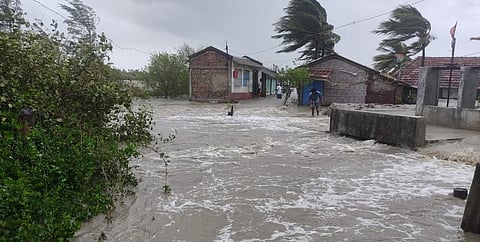

An international framework for assessing losses and damages in the aftermath of a disaster is now being used to evaluate the financial and social cost of local disasters in eight states in India. The framework helps get recovery and reconstruction efforts right following a disaster.
Post-Disaster Needs Assessment (PDNA) is being done simultaneously in Assam, Himachal Pradesh, Gujarat, Karnataka, Jharkhand, Maharashtra, Odisha and Meghalaya, Krishna Vatsa, member secretary of the National Disaster Management Authority (NDMA) told Down to Earth. Vatsa is the national overseer of PDNAs in the country.
These states all experienced severe flooding in the last few months. The results of these assessments are likely to come out next month, said Vatsa.
But this is not the first time PDNA has been conducted in India. It was first adopted during the Kerala floods of 2018 and again during the cyclone in Odisha in 2019, both unprecedented disasters.
However, until now, the assessment was only limited to massive disasters that required international funding from the World Bank, the Asian Development Bank and the United Nations, as state capacities were compromised due to the scale of the disasters.
“We are now working towards trying to use PDNA for all assessments. In another three years, we will see that it is being used for all disasters,” Vatsa said.
Compared with an ordinary assessment, the damage to infrastructure and how it impacts the stock of the economy at the macro-economic level is calculated first in a PDNA, said Professor Santhosh Kumar of the National Institute of Disaster Management.
“This includes a calculation of the disaster’s impact on Gross Domestic Product, the balance of payment and fiscal budget,” he said. “Secondly, how this affects the flow of revenue to multiple sectors is evaluated.”
For example, the number of farmers’ income affected per damaged acre of land and the livelihoods lost. Overall, a quantitative assessment is additionally done on the social and environmental impact of the disaster, Kumar told Down to Earth.
The Indian PDNA manual of 2019 says that this is not a replacement for the current Relief Memorandum used by states. PDNA adds a recovery and resilience component to disaster management.
The 15th finance commission report of 2021, for the first time, made a provision for recovery and reconstruction in the national disaster management budget, which is at the core of the PDNA.
The states did not receive international funding to do the current ongoing PDNAs, as they are expected to take the money from the budget, Vatsa indicated.
The State Disaster Risk Management Fund bifurcated the total amount Rs 1,60,153 crore between State Disaster Relief Funds and State Disaster Mitigation Funds. The former gets 80 per cent (Rs 121,182 crore) and the latter gets (32,030 crore).
There are three more allocations under the SDRF: Response and relief (40 per cent), recovery and reconstruction (30 per cent) and preparedness and capacity-building (10 per cent).
“We are training State Disaster Management Authority officials across the country on how to conduct PDNAs to be able to address sectoral losses accurately. We recently concluded a training session in Bengaluru,” Kumar told DTE.
State Disaster Management Authorities’ reaction to PDNAs?
PDNA is a very broad document and a wish list, said Member Secretary of Kerala State Disaster Management Authority Sekhar Lukose Kuriakose.
“As it aims to encourage building back better, sometimes it can have too much idealism. For instance, a civil engineer may want to build bridges resilient enough for Modified Mercalli Intensity 6 level earthquakes when the region could only be prone to MMI4 earthquakes,” Kuriakose told DTE.
PDNA may not make a difference in funding as the government will only follow the norms of assistance when dispersing funds, said GD Tripathi, chief executive officer at Assam Disaster Management Department.
“After calculating the damage as per the norms of assistance, we are asking for Rs 4,416 crore in our memorandum. But in reality, the cost of losses and damages could be Rs 15,000 crore,” Tripathy told DTE.
Globally, of the 55 PDNAs conducted worldwide since 2008, only two droughts — one in Malawi and the other Marshall Islands in 2016 — were of slow-onset disasters.
This is often the case because as a drought is a slow onset disaster evolving over months or even years, its effects are reduced better through mitigation and preparedness, some experts believe.
However, PDNA makes more sense for states that are flood and cyclone prone, a senior official from the Jharkhand State Disaster Management Authority who wished to remain anonymous.
“When it comes to drought, the agriculture department, water and irrigation department must work out strategies for mitigation. PDNA over the impact of droughts in Jharkhand is not needed from the perspective of the disaster department,” he said.